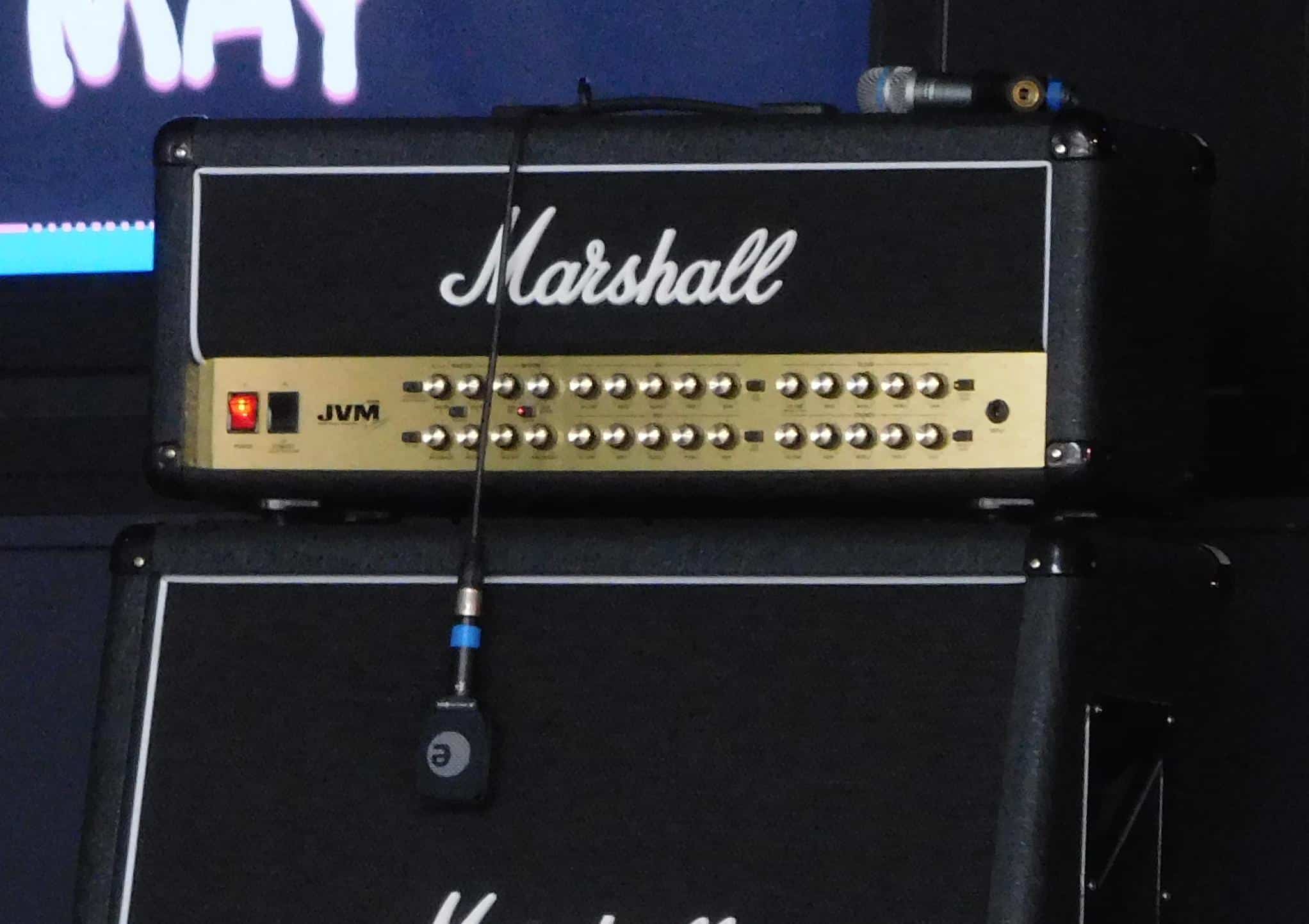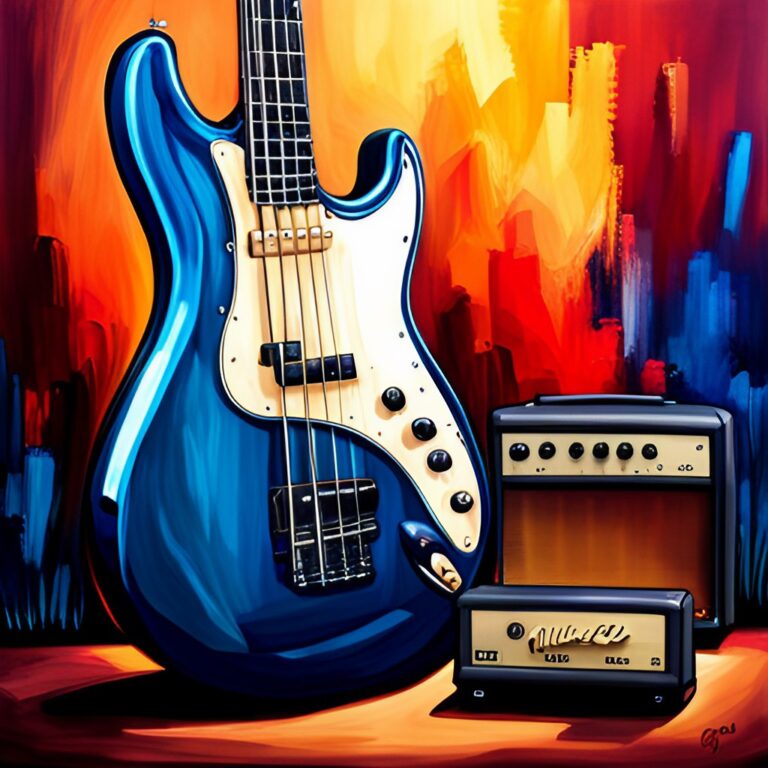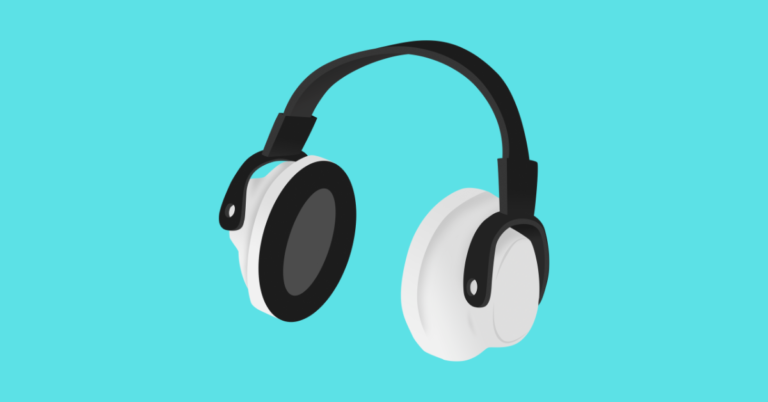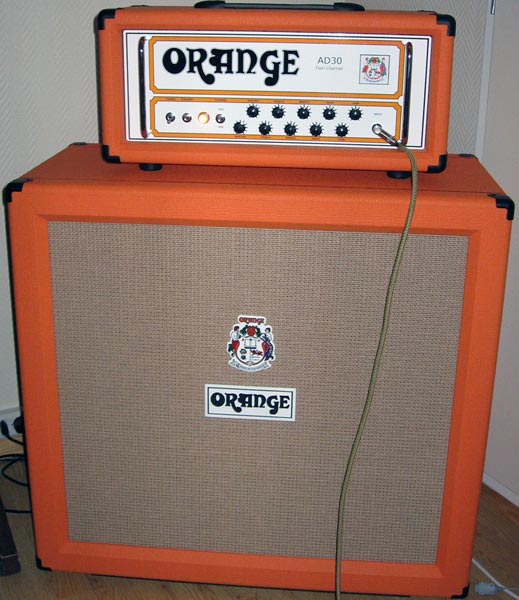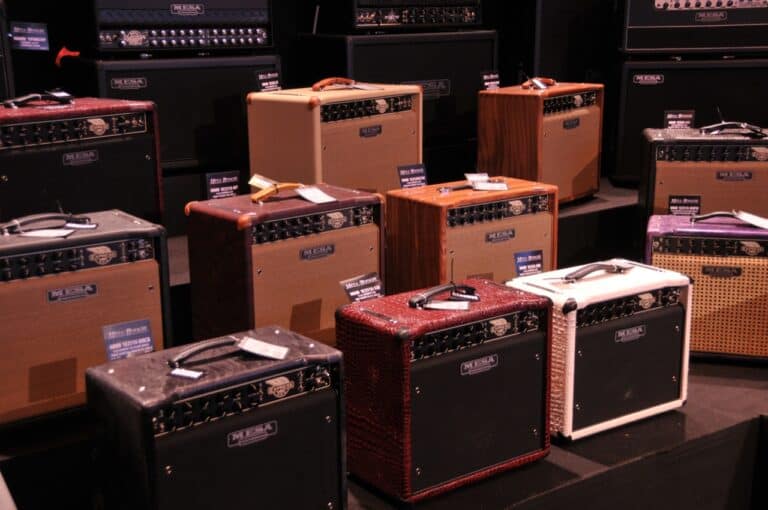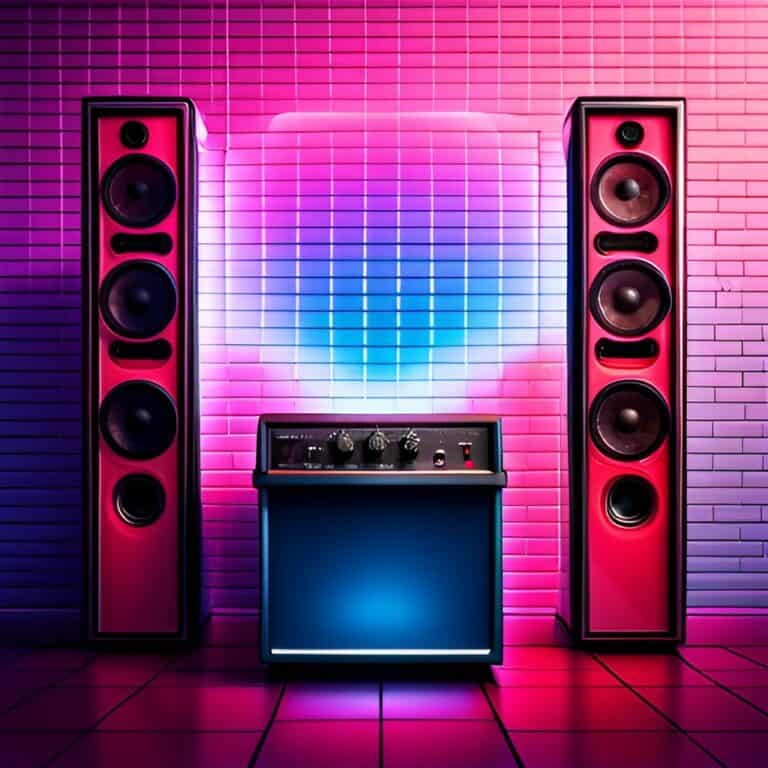An amp head comprises the preamp and power amp sections, excluding the speakers. Its role is to process and amplify the signal before sending it to a speaker cabinet. Below, we present our top picks for the finest guitar amp heads, followed by an in-depth exploration of their features and benefits.
- Marshall JVM 410H
- Orange OR100H
- Fender Bassman 250
- Vox AC30C2X
- Mesa Boogie Dual Rectifier
- Bogner Uberschall
- EVH 5150 III
Are you a guitarist eager to shape your unique sound? Look no further! Discover the power and potential of guitar amp heads, the ultimate game-changers for your rig. These bad boys hold the key to unlocking distinct tones that will make you stand out from the crowd. In this post, we’ll dive deep into what makes a guitar amp head tick and how it can transform your sound. Get ready to explore the different types of amplifier heads, empowering you to make an informed choice that perfectly suits your musical needs!
How do Guitar Amp Heads work?
Guitarists swear by their beloved guitar amp heads, attributing their unique sound to these magical devices. But have you ever wondered how a guitar amp head actually works? Let’s dive in!
At its core, a guitar amp head takes the electrical signal from the guitar and amplifies it, unleashing its true potential. This transformed signal then travels to a speaker, filling the air with beautiful sound. But here’s where the real fun begins.
The guitar amp head is equipped with a range of controls – gain, bass, treble, and more – that shape the signal and give your guitar its distinctive tone. It’s like having a palette of sonic colors at your fingertips. And that’s not all!
Some amp heads even come with built-in effects like distortion and reverb, adding an extra layer of creativity to your sound. It’s a playground for experimentation, allowing you to create music that’s uniquely yours. Click here to view the best practice amps.
Types of Guitar Amp Heads
When it comes to choosing a guitar amp head, there’s a lot to consider. It’s important to think about the type of music you plan on playing, as well as your budget and power requirements. Here are some common types of guitar amp heads to help guide you:
- Tube Amp Heads – These classic amplifiers are often favored for their signature warm sounds. Tube amp heads use vacuum tubes, which can vary in size and power. To see our list of the top tube amps click here.
- Solid State Amp Heads – These more modern amplifiers are usually associated with a brighter, clearer tone than their tube counterparts. They’re also much more reliable and require less maintenance.
- Digital Amp Heads – Many digital amps offer pre-programmed sounds and have the added benefit of being more lightweight than other types.
No matter which type of guitar amp head you choose, there’s no denying the versatility and power of a good amp head. With so many options available, it can be overwhelming to make the right decision. But with some research and experimentation, you can find the perfect one for your sound! If you want to find the best brand for your amp, we have a list of the top 10 brands for amplifiers here.
What is a cabinet?
Cabinets are the other half of any tube amp setup. An amplifier cabinet is a wooden box, usually featuring open back and closed-back designs, that houses the speaker or speakers. It’s an essential part of your sound, as it helps to shape the tone and provides insulation against external noise.
When deciding which cabinet size to get for your amp, consider how much power you’ll need and the type of music you’ll be playing. A larger cabinet will be able to hold more speakers, which means it can produce a louder sound with increased volume. On the other hand, a smaller cabinet will provide a tighter sound with less bass response.
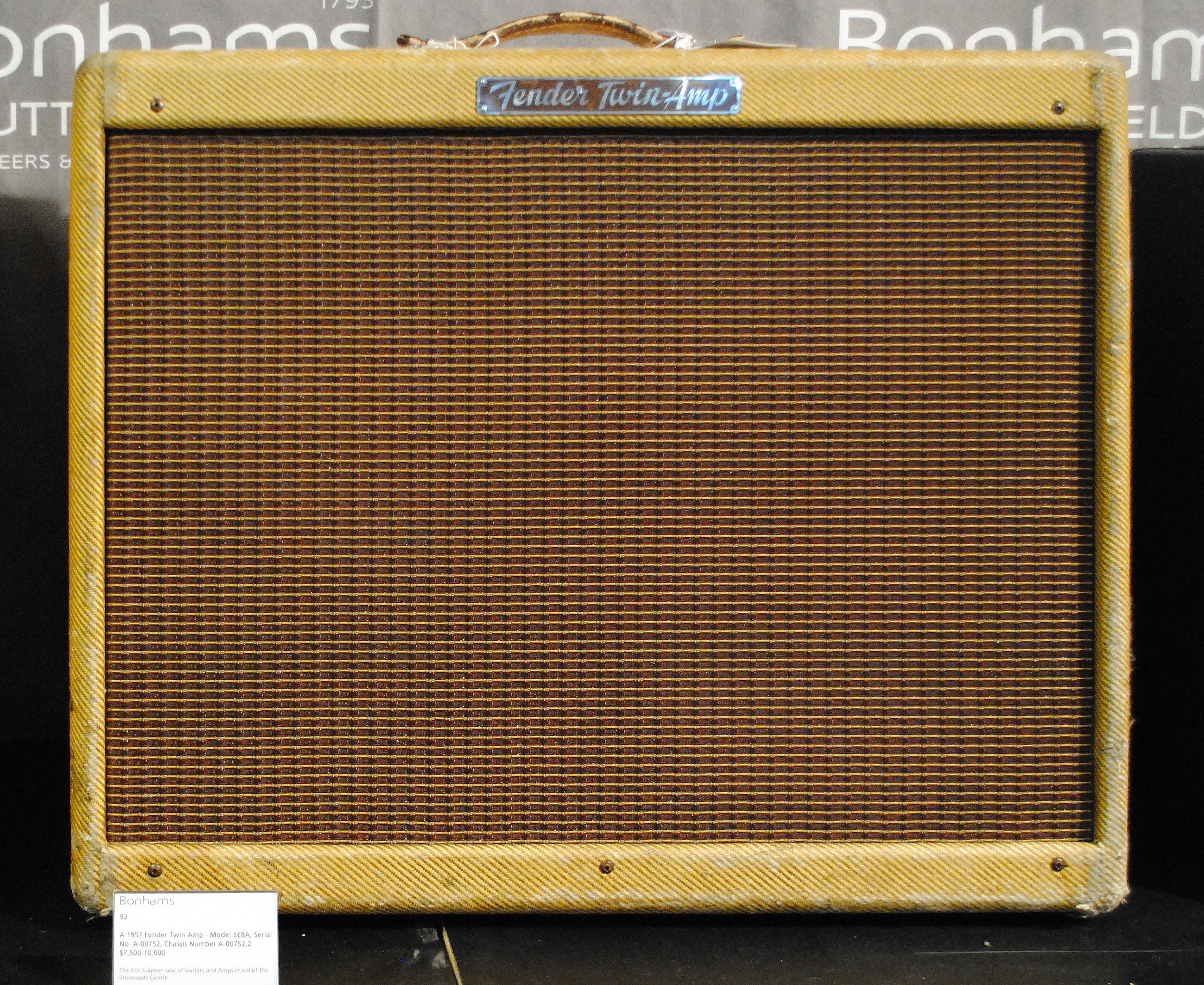
For most playing situations, a 4×12 or 2×12 cabinet is a great choice, as it offers the perfect balance of power and portability. And if you’re really looking to take your sound up to the next level, there are also cabinets specifically designed for different genres of music like rock, jazz, country, and more. So no matter what style you prefer, there’s a custom cabinet that can help bring out your unique tone.
Finally, don’t underestimate the importance of taking care of your cabinet. Keeping it clean and dust-free is essential for preserving its sound quality and extending the life of your amp setup. So be sure to take proper care of your equipment by regularly cleaning it with a damp cloth and mild detergent. Doing so can help ensure that you get the most out of your amp and cabinet setup for years to come.
So, don’t be afraid to experiment with different cabinets and find the one that best suits you and your playing style. It’s essential to getting a great sound out of your amp setup, so have fun and enjoy the journey! And who knows—you might just discover a whole new world of sound as you go!
And don’t forget to protect your amp and cabinet setup from any unexpected bumps or drops. A good-quality cover can help keep your equipment safe, while also shielding it from dust and other debris. With the right protection in place, you can rest assured that your gear will stay sounding great for years to come. Go ahead and give it a try, and you just might find your perfect sound!
So there you have it—a few tips on amp and cabinet setups. From finding the right cabinet for your needs to keeping your gear well-protected, there’s something here for everyone. So get out there, experiment with different options, and see what works best for you. After all, that’s the best way to find your signature sound! Good luck and happy playing!
Can you use a guitar amp head without a cabinet?
Picture this: you’ve just bought the guitar of your dreams and you’re ready to rock out. You excitedly set up your brand new amp head, but there’s one problem – you don’t have a cabinet. Can you use an amp head without a cabinet? Well, technically yes. But let’s be real, that’s like trying to eat a sandwich with no bread. You might get some flavor, but it’s not the full experience. Plus, your amp head will be pretty lonely without a cabinet to accompany it. So go ahead, invest in a good cabinet and give your guitar the full, rich sound it deserves. Your amp head will thank you.
What accessories work with amp heads?
When it comes to amps, the possibilities are endless. Aside from guitars and cabinets, there are countless other accessories that can help you take your sound up a notch. Here’s just a few of our favorites:
- Pedals – Pedals can be used to create all sorts of effects like distortion, reverb, and modulation. They’re great for adding texture and character to your sound.
- Multi-FX Processors – If you’re looking for more control over your tone, multi-FX processors are the way to go. You can use them to sculpt a unique sound that’s tailored to your style.
- Power Conditioners – Power conditioners are essential for keeping your amp heads running smoothly. They ensure that your amphead is receiving a steady supply of power, which can help reduce noise and hum.
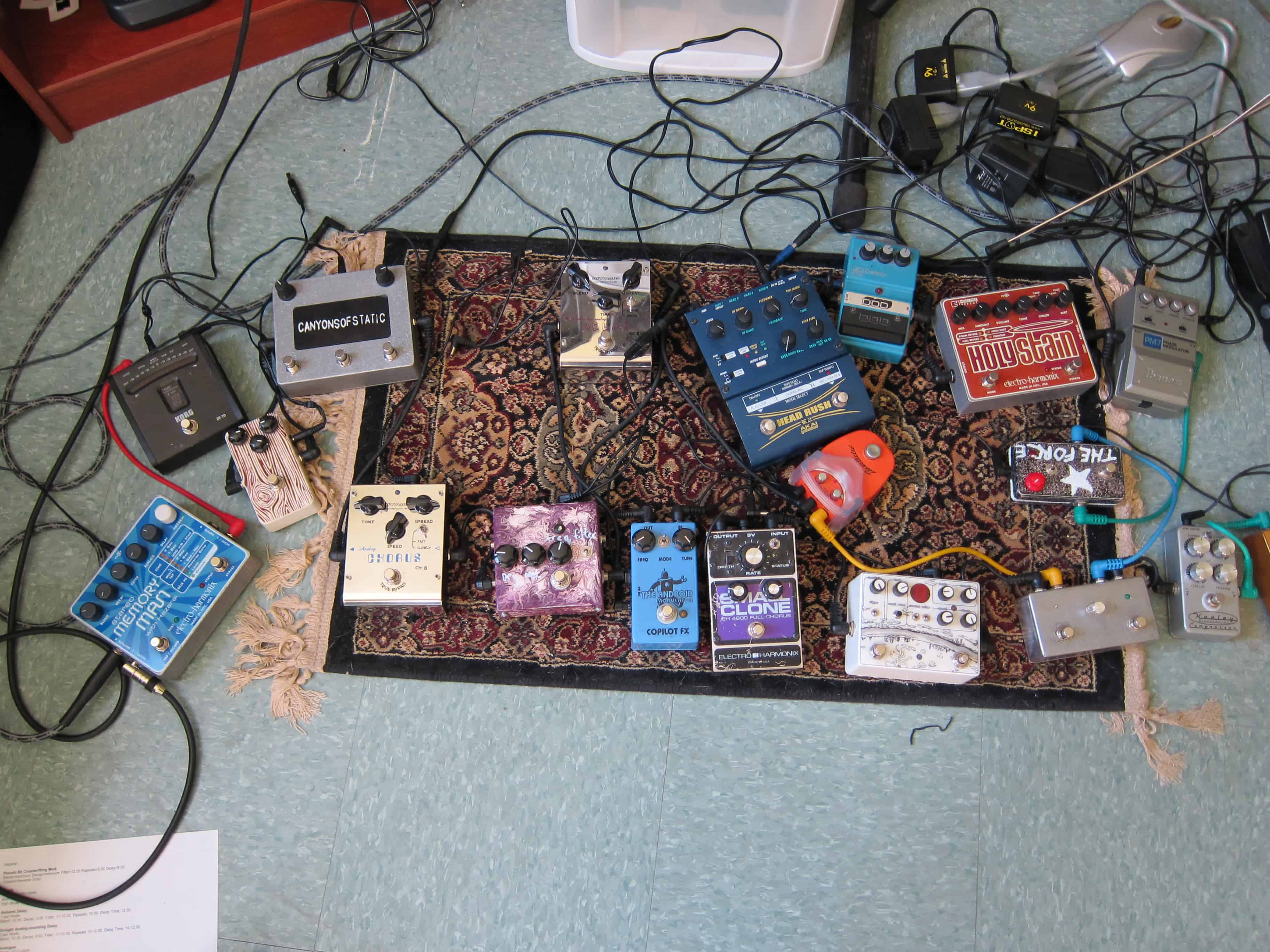
No matter what kind of accessories you choose, make sure to use high-quality components that won’t damage your amp head. Quality will always trump quantity when it comes to amps!
Are there other ways to get an amp-like sound?
Sure! If you don’t have the funds for a full-on amp setup, there are still plenty of options for getting that classic tube amp sound. For starters, there are countless digital modeling amps on the market these days. They emulate the sound of real tube amps and offer plenty of features and customizable settings.
Another great option is using software-based amp simulators, which can be run on a laptop or desktop computer. With these programs, you can easily tweak parameters like EQ, distortion, and reverb to get the exact sound you’re looking for. Plus, they often come with a wide range of presets that are designed to replicate the sounds of iconic amps.
If you’re looking for a low-cost solution, you can also try using guitar preamps. These are small devices that go between your guitar and amplifier to boost the signal. They come in all shapes and sizes, so there’s something for everyone!
No matter which approach you take, it’s important to experiment and find the right sound for you. With the right combination of effects, accessories, and gear, you can create an amazing amp-like tone to suit your unique style. So don’t be afraid to get creative and explore all the possibilities!
Should i get a combo amp or a guitar amp head?
That really depends on your specific situation and preferences. Combo amps come with the head and speaker cabinet already integrated into one unit, so they’re great for smaller spaces or if you need to travel a lot.
On the other hand, guitar amp heads are separate from the speaker cabinet, which gives you more flexibility when it comes to how you arrange your setup. You can also swap out different speakers to get different sounds. So if you have the room for it, amp heads might be a better choice.
No matter which option you choose, make sure to try out multiple amps to find the sound that’s right for you! With a bit of experimentation and patience, you’ll be able to craft your perfect classic tube amp sound.
And don’t forget to have fun while you’re at it! After all, that’s what playing guitar is all about. So crank up the volume and enjoy every moment of your amp-building journey! Good luck!
Can i make any other modifications to my amp?
Of course! If you want to take your tone-shaping possibilities to the next level, you can customize your amp with a few modifications. You can add extra effects like reverb or delay to craft unique sounds, or install a foot switch for quick access to different settings.
You can also tweak the internal components for even more tone-altering options. For example, swapping out the input jack or replacing the capacitors can give you a more customized sound. Just make sure to have an experienced amp tech do the modifications if you don’t feel comfortable doing it yourself.
No matter what modifications you decide to make, always remember that the key is experimentation and finding the combination of sounds that works best for your style and preferences. Have fun with it! That’s the best way to learn and find your signature sound.
Are there any other tips on amp and cabinet setups?
Absolutely—always remember to keep your equipment clean! Regular maintenance will help keep your setup sounding great, so make sure to take the time to clean and care for your amp, cabinet, and all of the associated cables. This is especially important if you are playing in a venue that has poor ventilation or a lot of dust. Keeping your gear clean will help ensure that it performs at its best for years to come!
Finally, always make sure to take regular breaks from playing. Your ears need time to recover from the loud sound of your gear, so be sure to take frequent breaks throughout your session. This will keep you playing your best and prevent any long-term hearing damage from occurring.
Conclusion on what is a guitar amp head.
An amp head is a vital part of any guitarist’s setup. It provides the power and tone control to make sure you can achieve your desired sound. Whether you’re looking for clean tones, crunchy distortion, or booming bass lines, an amp head is essential for making your music come alive. But remember that there are many different types of heads available, so it’s important to research all of your options before investing in a head. With the right setup, you can create amazing music that will make you stand out from the crowd!
So don’t be afraid to take the plunge and upgrade your sound with an amp head. As long as you do your research and find the right one for you, you’ll have no regrets!
Don’t forget that a guitar amplifier head and cabinet go hand-in-hand when it comes to creating your sound. If you want to get the best possible sound, consider buying a matched amp and speaker cabinet from the same manufacturer. That way, you can guarantee that your setup will provide you with great low end, strong mids, and a crisp high end. Plus, you’ll be able to make the most of all the features your amp head has to offer!
Finally, always remember that practice makes perfect. Take the time to learn about your amp head inside and out so that you can get the best possible sound from it. The more comfortable you are with playing your amp head, the easier it will be to get that perfect sound you’re looking for. With the right tools and practice, you can become a master of the guitar! If you want to find out what the best amps for beginner guitarist are, click here!
Here are 7 recommendations for guitar amp heads that will get you on the right track:
- Marshall JVM 410H: This is one of the most popular guitar amp heads out there, and for good reason. It’s powerful yet versatile, with four channels to choose from.
- Orange OR100H: High gain tones are what this amp is all about. When looking for a heavy metal sound, this is the head to go for.
- Fender Bassman 250: For those who want a classic, vintage sound, this is the guitar amp head for you. It has all the features of an old school tube amp in a modern package.
- Vox AC30C2X: If you’re looking for an amp head that can do it all, then look no further than the AC30C2X. It has a range of different sounds, from classic rock to modern metal.
- Mesa/Boogie Dual Rectifier: This is another great guitar amp head for those who want a wide range of tones. It covers everything from blues to hard rock and even some metal.
- Bogner Uberschall: When you need an amp head that will get you a crushing metal sound, then this is it. It has a tight low end and plenty of gain on tap.
- EVH 5150 III: This is the guitar amp head that Eddie Van Halen himself uses. It’s versatile enough to cover all genres of music, but really shines with hard rock and metal tones.

